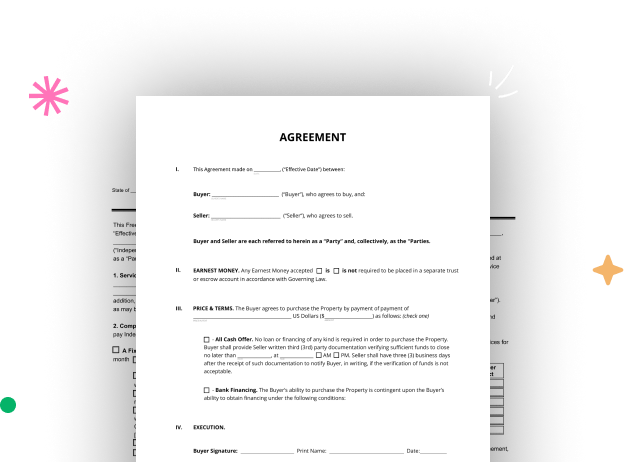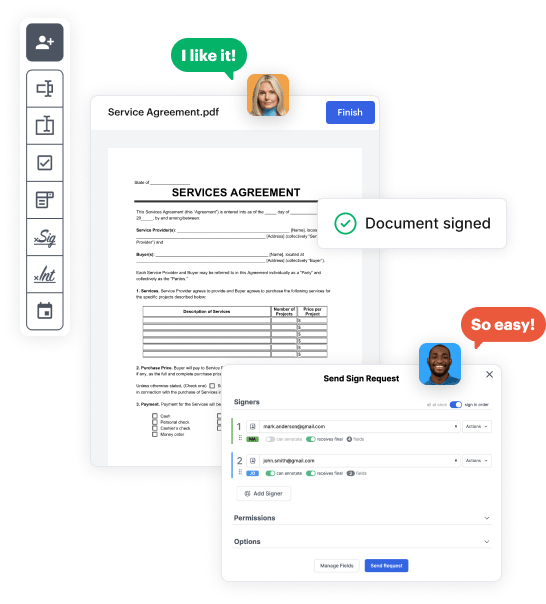

First, log in to your DocHub account. If you don't have one, you can easily register for free.
Once signed in, access your dashboard. This is your main hub for all document-based activities.
In your dashboard, hit New Document in the upper left corner. Select Create Blank Document to put together the Personal Trust from the ground up.
Place numerous fields like text boxes, images, signature fields, and other elements to your template and assign these fields to specific individuals as necessary.
Customize your template by inserting instructions or any other vital tips utilizing the text feature.
Thoroughly check your created Personal Trust for any inaccuracies or required adjustments. Utilize DocHub's editing features to perfect your template.
After completing, save your copy. You can opt to keep it within DocHub, export it to various storage platforms, or forward it via a link or email.